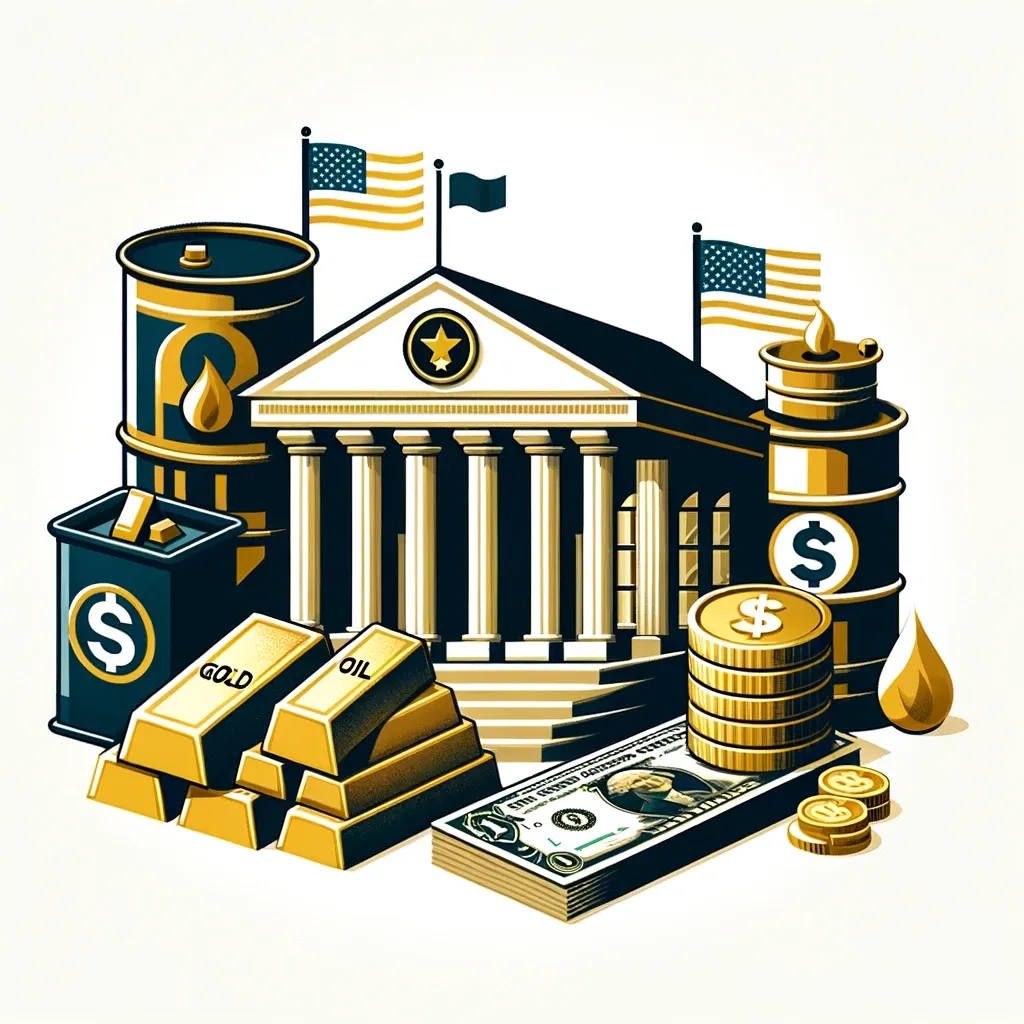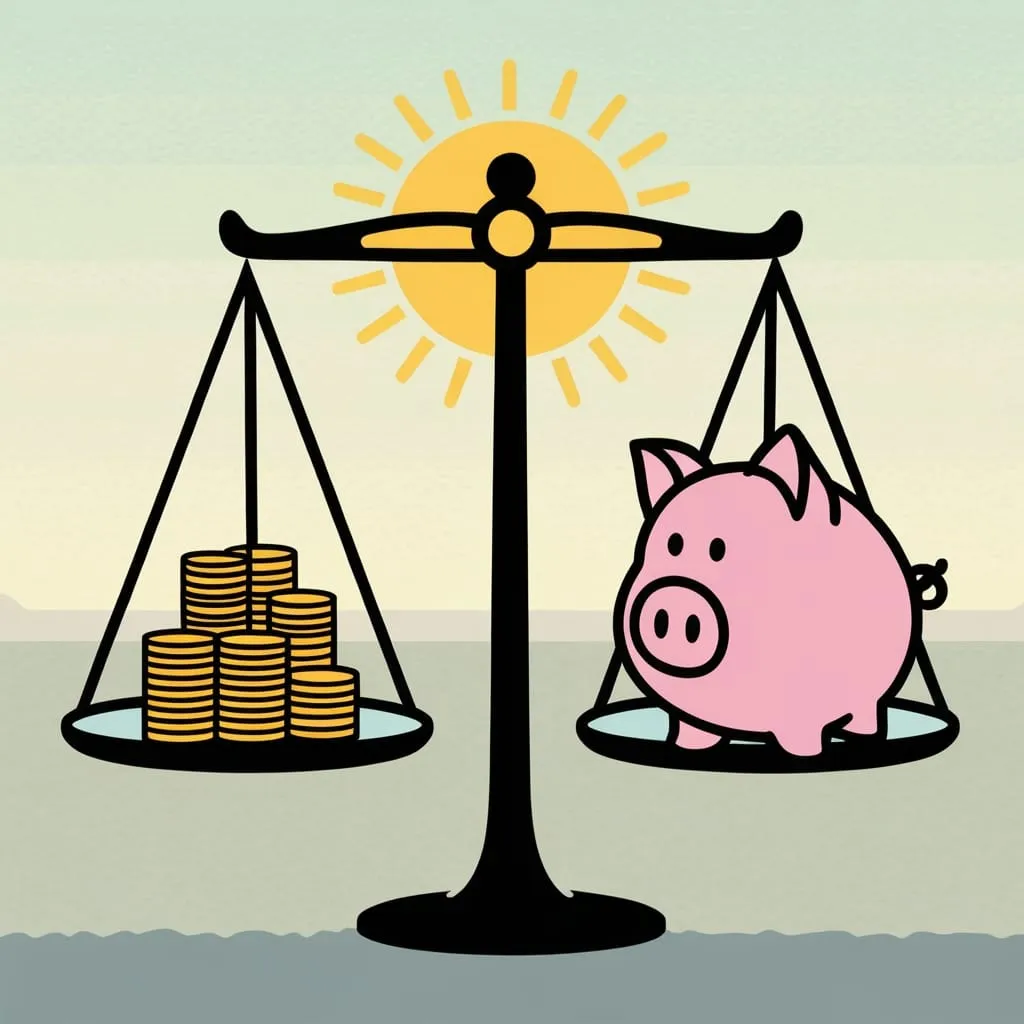It's pretty mind-blowing to think that about 9 out of every 10 people don't really get how the money in their wallets actually comes to be. I mean, we use cash all the time, but do we really know what goes into making it, who decides how much to print, and all that jazz? This is a big deal because not knowing the ins and outs of our money system can lead to some real headaches with our personal finances.
Nowadays, we all just keep doing what we've always done: trusting banks, saving money the old-fashioned way. But have you ever stopped to wonder why the financial tricks that worked for our grandparents don't seem to cut it anymore? We're in a different game now when it comes to handling our money, and it's super important to understand what's changed.
So, let's dive into this together. We're going to explore the nitty-gritty of how money and personal finance are changing right before our eyes. It's time to get clued up about the cash in our pockets and the future of our finances!
Gold Standard:
The Gold Standard represents a monetary system where the value of a country's currency is directly pegged to gold. In practical terms, this implies that the currency circulating in an economy has a specific, tangible value in terms of gold, and theoretically, it could be exchanged for its equivalent in gold.
To illustrate, under a Gold Standard regime, if 1 ounce of gold is valued at $50, it follows that a $50 note could be exchanged for an ounce of gold. This direct linkage ensures that the currency's value remains relatively stable, as it is anchored to the price of gold, a commodity known for its price stability.
Historically, the Gold Standard was widely adopted because it lent a high degree of stability to currencies. Nations adhering to this standard set a fixed price for gold, thereby establishing a fixed exchange rate for their currencies.
However, the Gold Standard had inherent limitations. Its rigidity constrained the ability of governments to modulate their economies, particularly during periods of economic downturns. The inability to freely adjust the money supply in response to economic conditions was a significant drawback, contributing to the gradual abandonment of the Gold Standard in favor of more flexible currency systems.
Modern Fiat Currency System:
The shift to a modern fiat currency system marks a significant evolution in the world of finance, where the value of a currency is no longer anchored to a physical commodity like gold or silver. Instead, a fiat currency's value hinges on the trust and authority of the government that issues it. In this system, the value is derived from the dynamics of supply and demand, coupled with the perceived stability and creditworthiness of the issuing government, rather than any physical asset.
Take the US dollar as a case in point. In a fiat system, the dollar's value isn't pegged to a tangible quantity of gold or other commodities. Its worth is underpinned by the confidence in the US government and its economy. The government, through its declaration of legal tender status, imbues the currency with its value. While this allows for greater flexibility in terms of monetary policy, including the capacity to print more money, there's a caveat: excessive money printing can lead to inflation, diluting the currency's value.
In a fiat currency system, central banks, such as the Federal Reserve in the US, the Bank of England in the UK, and the Reserve Bank of India, wield considerable influence over their economies. They can manipulate key economic variables, including inflation and unemployment, through various monetary policy tools, including interest rate adjustments and money supply regulation. The efficacy of this system, however, is contingent upon the government's ability to maintain confidence in the currency and manage the economy effectively.
Debt and How it affects you:
In a modern fiat currency system, the way money is created and its impact on debt can be quite complex. Here's a simplified explanation:
- Savings and Bank Loans: Imagine you deposit $1,000 in a savings account at a bank. The bank doesn’t just keep your money sitting in a vault. Instead, it uses a portion of your deposit to make loans to other people or businesses. This is how banks primarily make money—by charging interest on the loans they give out.
- Fractional Reserve Banking: Banks operate on a system called fractional reserve banking. This means they are required to keep only a fraction of their depositors' money in reserve. For example, if the reserve requirement is 10%, the bank can lend out $900 of your $1,000 deposit.
- Money Creation: When a bank loans out money, it essentially creates new money. For example, if the bank lends $900 to someone to buy a car, that person pays the car seller, who then deposits the money, perhaps in a different bank. That bank can then lend out a portion of that deposit, creating even more money in the system. This process can multiply the initial deposit many times over, effectively creating money 'out of thin air.'
- Problems with Money Creation: While this system is crucial for economic growth and enables people and businesses to borrow money, it can also create problems. One major issue is inflation. If too much money is created too quickly (more money chasing the same amount of goods and services), the value of money can decrease, leading to higher prices.
- Example of a Problem: Imagine a scenario where banks become too lenient in giving out loans. This could lead to a situation where too much money is chasing too few investment opportunities or consumer goods, driving up prices. Alternatively, if these loans are made to borrowers who cannot repay them (as was the case during the 2008 financial crisis with subprime mortgages), it could lead to a banking crisis. Banks might find themselves with a shortage of cash as they cannot recover the loans they issued, leading to a credit crunch where it becomes difficult for businesses and consumers to obtain loans.
In summary, while the creation of money through bank lending under a fiat currency system is essential for economic growth and liquidity, it needs to be managed carefully. Excessive or irresponsible lending can lead to inflation, asset bubbles, or even financial crises. Central banks and regulatory authorities play a crucial role in monitoring and controlling this process to maintain economic stability.
Government doesn’t have an unlimited supply of money as many thinks:
When a government needs money to run its operations and fund various projects, it can use its money reserve usually obtained from various taxes, investments and other means or borrow money.
Borrowing is often done by issuing government bonds. These bonds are essentially IOUs from the government to whoever buys them, which can be individuals, banks, or other countries. When someone buys a government bond, they are lending money to the government with the promise of being paid back with interest after a certain period.
The government can also borrow money directly from the central bank. In this case, the central bank creates new money to buy government bonds, increasing the money supply in the economy. This method is often used in situations where the government needs a lot of money quickly, like during a financial crisis or a major economic downturn.
Both methods help the government get the funds it needs, but they also increase the national debt. Managing this debt is a crucial aspect of a country's economic policy.
How can this affect the normal savings of a citizen and Increase Inflation:
When governments, banks and central banks create more fiat money, it often leads to lower interest rates on savings accounts. This is because central banks lower interest rates to encourage borrowing and spending, which can stimulate the economy.
However, for savers, this means the interest earned on their savings accounts might be quite low. At the same time, if the rate of inflation (the rate at which prices for goods and services rise) is higher than the interest rate on savings, the real value of the money saved decreases.
In other words, even though you're earning interest on your savings, the purchasing power of that money might be going down because things are getting more expensive faster than your money is growing.
Summary:
The journey from the Gold Standard to the modern fiat money system illustrates the evolution of global economic systems:
- Gold Standard: Historically, currencies were often backed by gold, meaning their value was tied to a specific amount of gold. This system, used widely in the 19th and early 20th centuries, ensured stability in exchange rates and controlled inflation but lacked flexibility in responding to economic crises and was eventually abandoned.
- Transition to Fiat Money: By the mid-20th century, most countries, including the US, UK, and India, moved away from the Gold Standard. This shift, especially after the collapse of the Bretton Woods system in 1971, led to the adoption of fiat money – currency that isn't backed by a physical commodity but is valued by the trust in the government that issues it.
- Money Creation and Central Banks: Central banks can create money, usually digitally, to manage the economy. They adjust interest rates and use tools like open market operations to influence the money supply, aiming to balance economic growth with inflation control.
- Impact on Savings and Inflation: Modern monetary policies, especially the creation of fiat money, can lead to low-interest rates on savings. If these rates are lower than the rate of inflation, the real value of savings decreases over time, reducing purchasing power.
In essence, the transition from the Gold Standard to fiat money reflects a shift towards more government control over currency and the economy.
While this provides flexibility to respond to economic challenges, it also requires careful management to avoid issues like inflation and to preserve the real value of savings.






